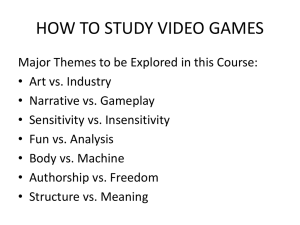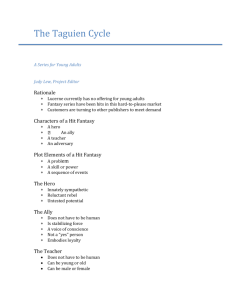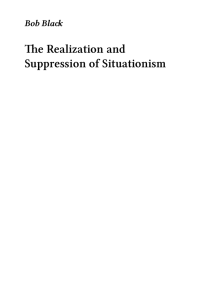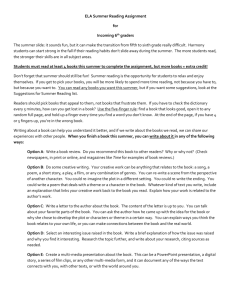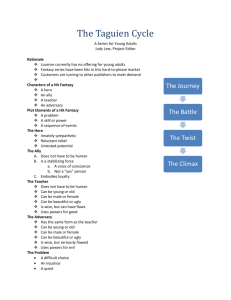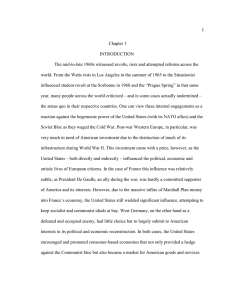10-2. How do more “critical” projects of pleasure such as... Archigram, etc. compare to consumptive theatres such as Disneyland? Is...
advertisement
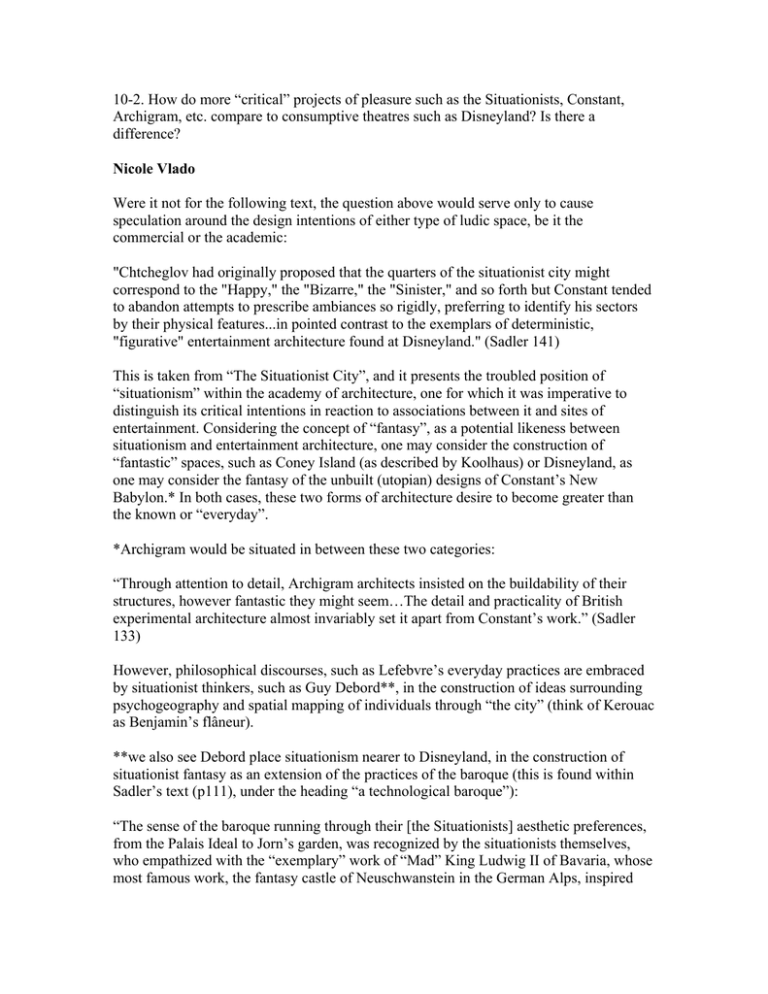
10-2. How do more “critical” projects of pleasure such as the Situationists, Constant, Archigram, etc. compare to consumptive theatres such as Disneyland? Is there a difference? Nicole Vlado Were it not for the following text, the question above would serve only to cause speculation around the design intentions of either type of ludic space, be it the commercial or the academic: "Chtcheglov had originally proposed that the quarters of the situationist city might correspond to the "Happy," the "Bizarre," the "Sinister," and so forth but Constant tended to abandon attempts to prescribe ambiances so rigidly, preferring to identify his sectors by their physical features...in pointed contrast to the exemplars of deterministic, "figurative" entertainment architecture found at Disneyland." (Sadler 141) This is taken from “The Situationist City”, and it presents the troubled position of “situationism” within the academy of architecture, one for which it was imperative to distinguish its critical intentions in reaction to associations between it and sites of entertainment. Considering the concept of “fantasy”, as a potential likeness between situationism and entertainment architecture, one may consider the construction of “fantastic” spaces, such as Coney Island (as described by Koolhaus) or Disneyland, as one may consider the fantasy of the unbuilt (utopian) designs of Constant’s New Babylon.* In both cases, these two forms of architecture desire to become greater than the known or “everyday”. *Archigram would be situated in between these two categories: “Through attention to detail, Archigram architects insisted on the buildability of their structures, however fantastic they might seem…The detail and practicality of British experimental architecture almost invariably set it apart from Constant’s work.” (Sadler 133) However, philosophical discourses, such as Lefebvre’s everyday practices are embraced by situationist thinkers, such as Guy Debord**, in the construction of ideas surrounding psychogeography and spatial mapping of individuals through “the city” (think of Kerouac as Benjamin’s flâneur). **we also see Debord place situationism nearer to Disneyland, in the construction of situationist fantasy as an extension of the practices of the baroque (this is found within Sadler’s text (p111), under the heading “a technological baroque”): “The sense of the baroque running through their [the Situationists] aesthetic preferences, from the Palais Ideal to Jorn’s garden, was recognized by the situationists themselves, who empathized with the “exemplary” work of “Mad” King Ludwig II of Bavaria, whose most famous work, the fantasy castle of Neuschwanstein in the German Alps, inspired the centerpiece of Disneyland.” It is perhaps to say that the audience for whom the “fantasy” is design determines the difference between situationist and disney architectures. The critical works act to amaze the architectural community, whereas the architecture of entertainment is sited within the realm of consumerism. Both architectural forms seek to “arouse human emotion”, as concluded in the (unifying) words of Luna Park’s Frederic Thompson: “You see, I have built Luna Park on a definite architectural plan. As it is a place of amusement, I have eliminated all classical conventional forms…It is marvelous what you can do in the way of arousing human emotions by the use you can make architecturally, of simple lines. Luna Park is built on that theory – and the result has proven that theory’s worth”. (Koolhaus 39)

